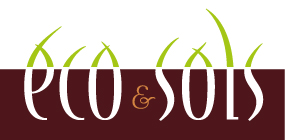 Growth and hydraulics of rubber trees subject to water stress: assessment of different varieties
Growth and hydraulics of rubber trees subject to water stress: assessment of different varieties
Rubber production is a major activity for planters in south east Asia, in particular in Thailand, the world’s largest producer. However, the sustainability of rubber production is uncertain given climate change and expansion into sub-optimal areas. One main variety is grown (RRIM600) with intensive monoculture, regardless of pedoclimatic conditions. Little is known about the variability and ecophysiological factors affecting the performance of different varieties subject to water stress conditions but there is a call for the selection of varieties.
Hypotheses and aims
Working hypotheses
Within the main varieties cultivated in south east Asia,
- there is a variability in the trade-off between optimum use of water and tolerance to water stress and
- this trade-off affects the carbon efficiency and final growth.
The aims
- Assess the existing variability in terms of radial growth and ecophysiological traits associated with water and carbon flows.
- Statistical analysis of the relationships between ecophysiological traits and growth, existence of particular behaviours or trade-offs.
- Aechanistic analysis of the radial growth depending on the nature and severity of seasonal water stress.
Date
Janvier 2014- Decembre 2017
Partners
- Rubber Authority of Thailand (ex. RRIT): Nongkhai Rubber Research Center
- Kasetsart University (Bangkok et Sakhon Nakhon Campus)
- Khon kaen University
- UMR PIAF “Physique et Physiologie Intégrée des Arbres Fruitiers et forestiers” (Clermont-Ferrand)
- UMR EEF « Ecologie et Ecophysiologie des arbres Forestiers » (Nancy)
- UMR IEES « Institut d’Ecologie et de Sciences Environnementales de Paris »
Funding
- Institut Français du Caoutchouc-Sociétés (Michelin, SOCFIN, SIPH)
- ANR Heveadapt
Contact
Frederic Do, Eco&Sols, IRD Montpellier
e-mail :






